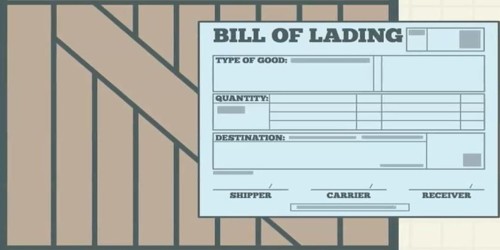Bill of Lading (BOL)
It is a receipt given by the captain of the ship of goods shipped on board his vessel. It is a detailed list of a ship’s cargo in the form of a receipt given by the master of the ship to the person consigning the goods. The term “ lade” means to put the cargo onto a ship or other form of goods carrier. It is a legal document issued by a carrier to a shipper that details the type, quantity, and destination of the goods being carried. The original copy of the bill of lading is provided to the carrier, and a copy of the same should also be ascribed to the packaged freight. If managed and reviewed properly, a bill of lading can help prevent asset theft.
Bill of Lading is a document of title, a receipt for shipped goods, and a contract between a carrier and shipper. This important document used in foreign trade shows the description of goods, marks, weight, quantity, and freight. It is a document that establishes an agreement between a shipper and a transportation company for the transportation of goods. It works as a receipt of freight services, a contract between a freight carrier and shipper and a document of title. This certificate is treated as a document of title to the goods. A completed BOL legally shows that the carrier has received the freight as described and is obligated to deliver that freight in good condition to the consignee. Land, ocean, and air are the means used for bills of lading.
Types
- Straight bill of lading – used when the shipment has been paid for in advance and the carrier is delivering the freight to the buyer or other appropriate parties.
- Order bill of lading – used when the goods are being shipped before they’re paid for. It is expressed as “to the order of” on the bill of lading often followed by the recipient’s name.
The purposes of a bill of lading include:
- To serve as evidence of a contract of carriage (transport), it acts as a piece of evidence for the carriage contract containing the terms and conditions under which the goods transportation will be carried out.
- To act as a receipt for the goods received, and ultimately delivered, by the carrier; it represents as a receipt which endorses that the carrier has received the cargo as per the contract and the goods are received in good condition.
- To serve as a bill of lading title for the goods in shipment; it is a document of title, permitting the sale of goods in transit and the raising of financial credit.
















